At 30 Seilerstätte in Vienna is the House of Music, an innovative sound museum. Opened in June 2000, it aims to be a place that plays with music with the goal of conveying understanding and enthusiasm for it and experiencing it in its diversity. Vienna is considered the capital of music because many musicians and great composers were born and active here, starting with Mozart, and because of this it has never shied away from new experimentation and unconventional approaches. In addition to the history of music, the museum addresses the relationship between analog and digital, natural and electronic, tradition and innovation. In fact, here the world of music is presented in aninnovative and interactive way to provide the public with a key to experiences beyond classical music education. The main objective of this place is therefore to arouse curiosity and fun by playing with music, so that it becomes a fundamental part of everyone’s daily life: music is a universal language that builds interpersonal bridges, promotes linguistic and intercultural understanding, boosts self-confidence and above all makes one happy.
Following the last renovation that took place in 2000, the palace became the home of the House of Music, but originally it was the former palace where Archduke Karl of Habsburg-Teschen resided, who settled here in 1805, and even earlier, in the 16th century, the building served as a royal foundry and then in the early 18th century it became a pawn shop for the rich at the behest of Emperor Joseph I. From 1841 to 1847 the palace was also home to Otto Nicolai, composer and founder of the Vienna Philharmonic, while from 1838 to 1856 it was owned by one of the most important bankers and entrepreneurs of the 19th century in Austria, Simon Georg Freiherr of Sina (1783-1856). The palace, with its Baroque facade and iron balconies added in 1872, was transformed in 1965 into an international cultural center and student house that even housed a small theater. It was 1842 when conductor and composer Otto Nicolai founded the Vienna Philharmonic Orchestra, the world’s most famous orchestra, right here.Already a chapel master at the Vienna Court Opera in 1841, at the invitation of prominent figures on the Viennese music scene, Nicolai conducted a “Grand Concert” in the great hall of the Redoute on March 28, 1842, performed by the “Staff of the Imperial and Royal Court Theater Orchestra.” The event initiated the Vienna Philharmonic. The House of Music is thus deeply connected to the history of Viennese music and tells its visitors about it through the four floors into which the building is divided, starting with the staircase leading to the second floor, where blue sound-absorbing panels are installed to lead the audience into the world of nature’s sounds and noises. Climbing the steps, one then encounters Stairplay, the sound staircase, which invites one to touch the suspended piano keys with one’s fingers, which will become the steps of a sound staircase. Here it is possible to literally play the ladder and make music while discovering different sounds each time. The sound staircase also constitutes the project carried out in cooperation with Lang Lang International Music Foundation, the organization that aims to educate, inspire and motivate the next generation of music lovers and artists.
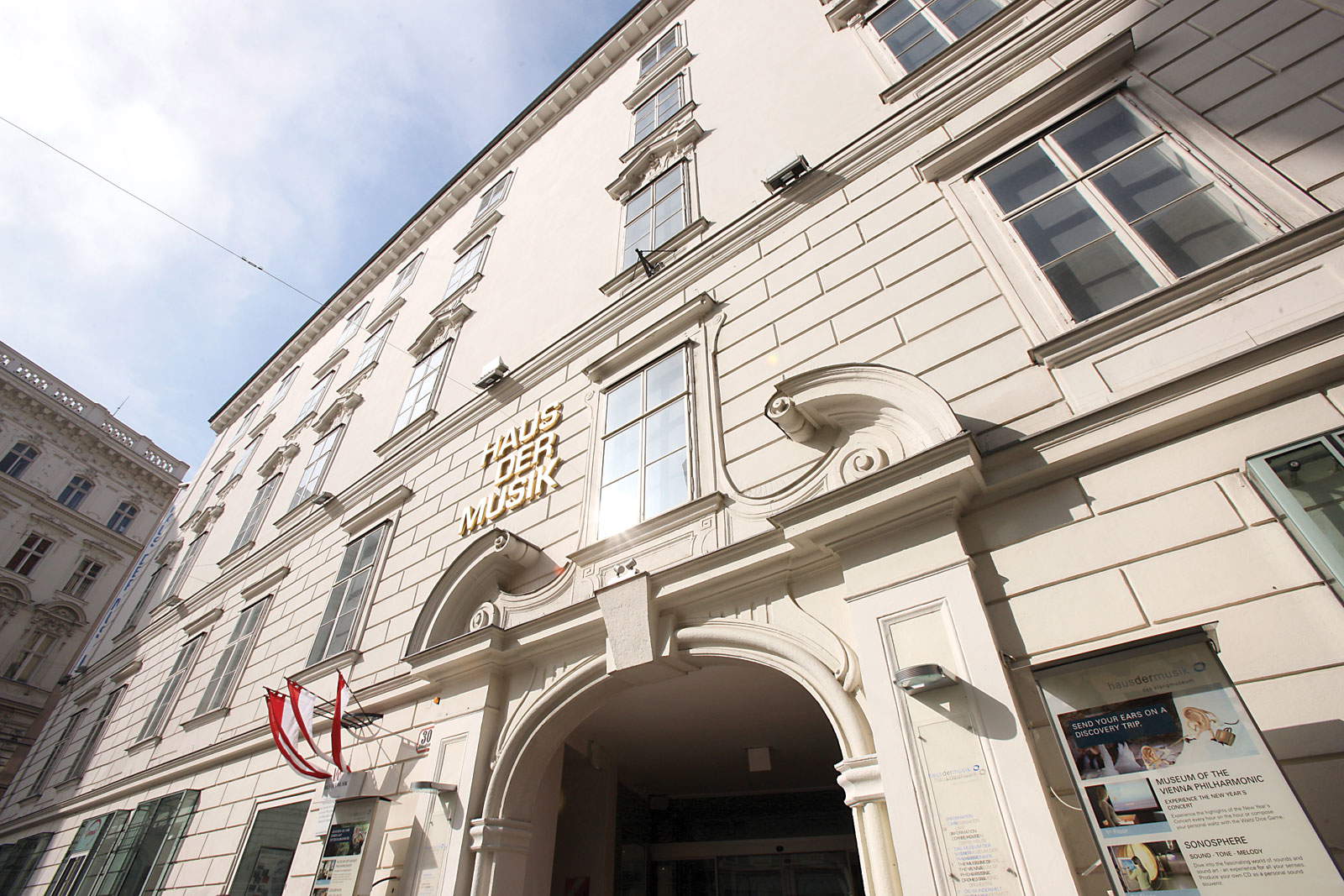
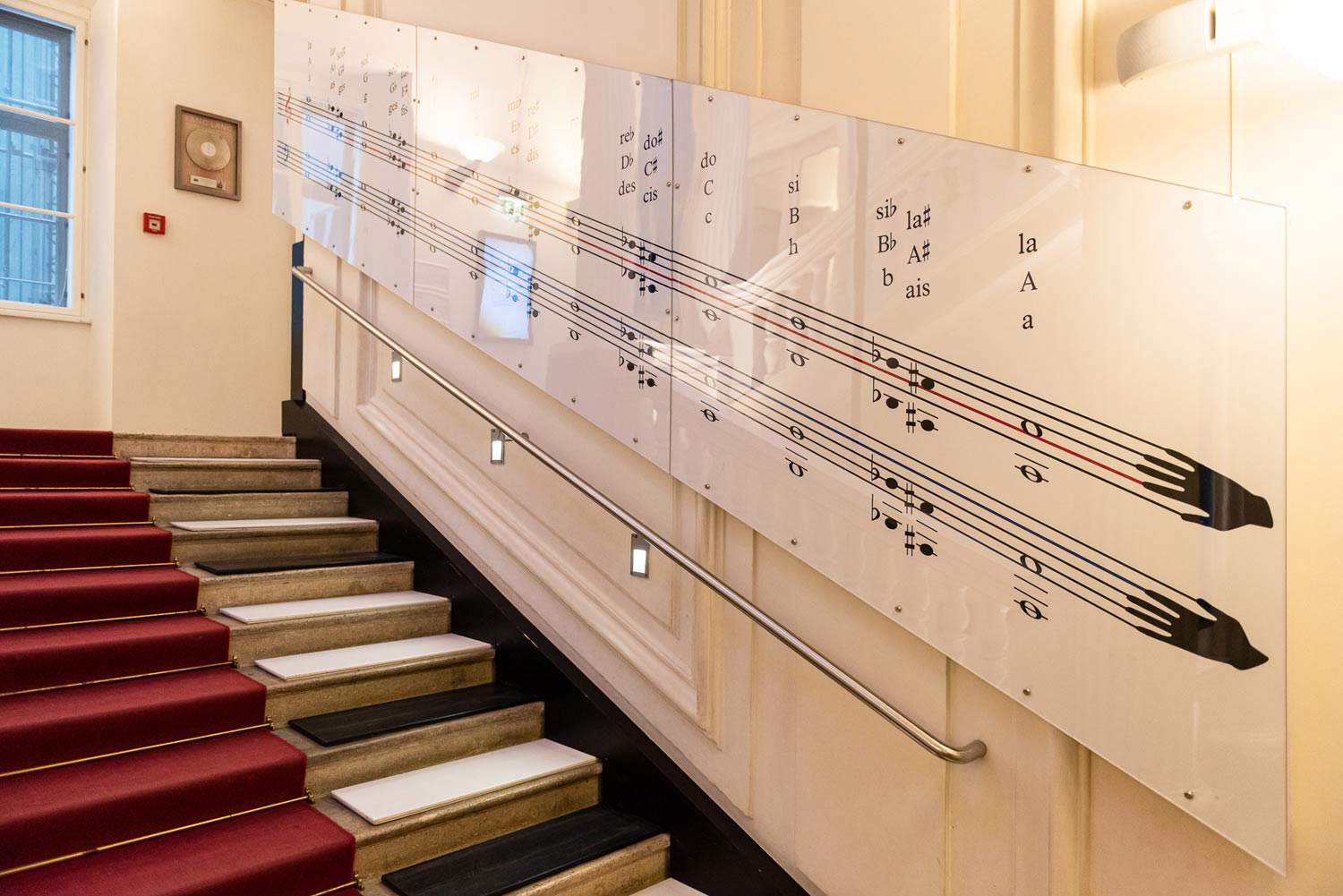

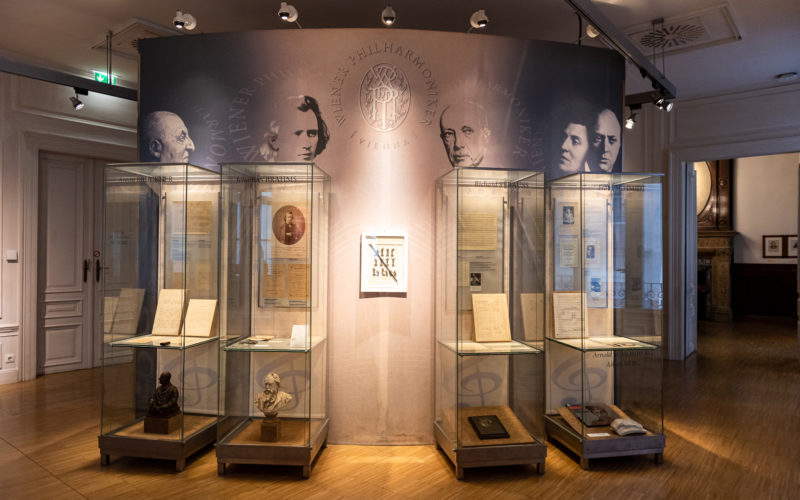
As mentioned, the House of Music was the founding place of the Vienna Philharmonic, and of course the museum could not fail to tell the story of the orchestra. Historical documents, pictures and artifacts illustrate its events and major moments starting with the founding decree, but the playbill of the first concert on March 28, 1842 is also on display here as well as the original batons of Herbert von Karajan, Richard Strauss, Karl Böhm and other famous conductors. Four display cases showcase the connection of famous conductors and composers with the Philharmonic: items belonging to Johannes Brahms, Anton Bruckner, Richard Strauss, Hans Pfitzner, Franz Schmidt, Arnold Schönberg, Alban Berg and Anton Webern are on view, including the program for the first performance of Bruckner’s Second Symphony in 1873, Brahms’s spectacles and a letter from Richard Strauss from 1942. The second floor is an old ballroom from the second quarter of the 19th century: the spacious rooms are filled with evidence from the Philharmonic’s historical archives, located in the same building (from 1842 to 2000 the archives found space in the Musikverein). In the ballrooms people often twirled to the rhythm of waltzes and, little known fact, Wolfgang Amadeus Mozart and Joseph Haydn sometimes composed their waltzes, leaving it up to chance ... dice. At the end of the eighteenth century, various parlour games became widespread, with which people entertained themselves in cafes or at home, and one of these was precisely the game of dice. The composition on a random basis is thus not an invention of today, the difference being that at that time the two composers did not have a computerized version of the game. Inspired by the latter, by rolling the dice, visitors can compose their own personal waltz (the system works on a random basis and allows more than a thousand waltz variations to be composed). In the museum store on the fourth floor it will then be possible to pick up one’s composition. In addition, in the movie theater, you can listen to the original New Year’s Concert every hour. Fun fact: The first New Year’s Concert took place on December 31, 1939 under the direction of Clemens Strauss, and only from the second concert was New Year’s Day chosen for the event; today, as then, it is held in the golden hall of the Musikverein, not far from the House of Music.
On the second floor of the building is Sonotopia, a complex of dark spaces that illustrates sensory perception; experiments and sound experiences lead visitors into the world of sounds, from creation through its propagation by giant instruments to the processing of sounds. An innovative sound laboratory allows the audience to model a sound and customize it in a playful way. You can discover everything about sound: from the sound wave tube that German physicist August Kundt managed to represent in 1866 to sound phenomena in six different terminals, to the study ofhuman hearing. Finally in an entire room move creatures and shapes called clongs that are created by all visitors with the help of the latest virtual reality techniques.
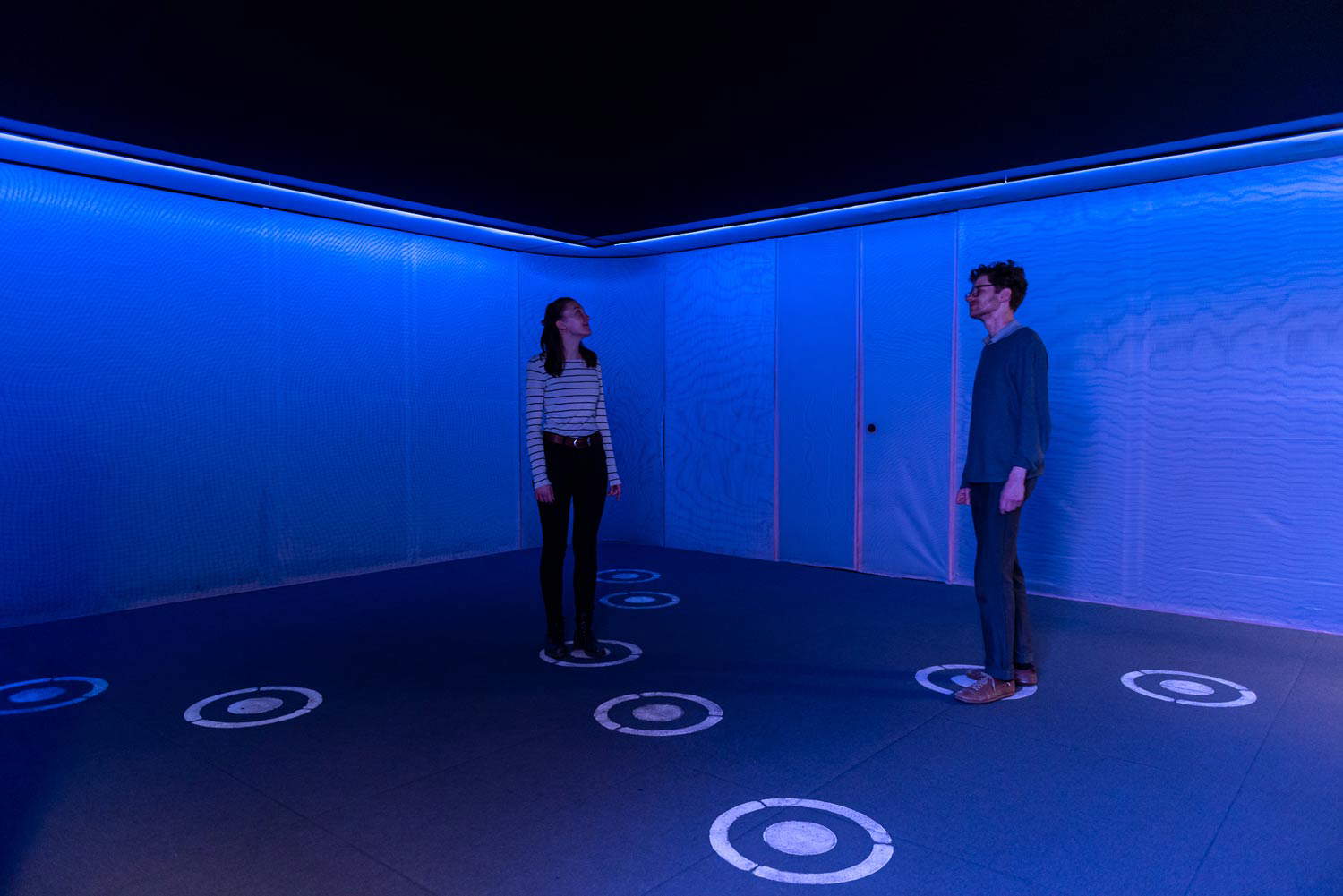
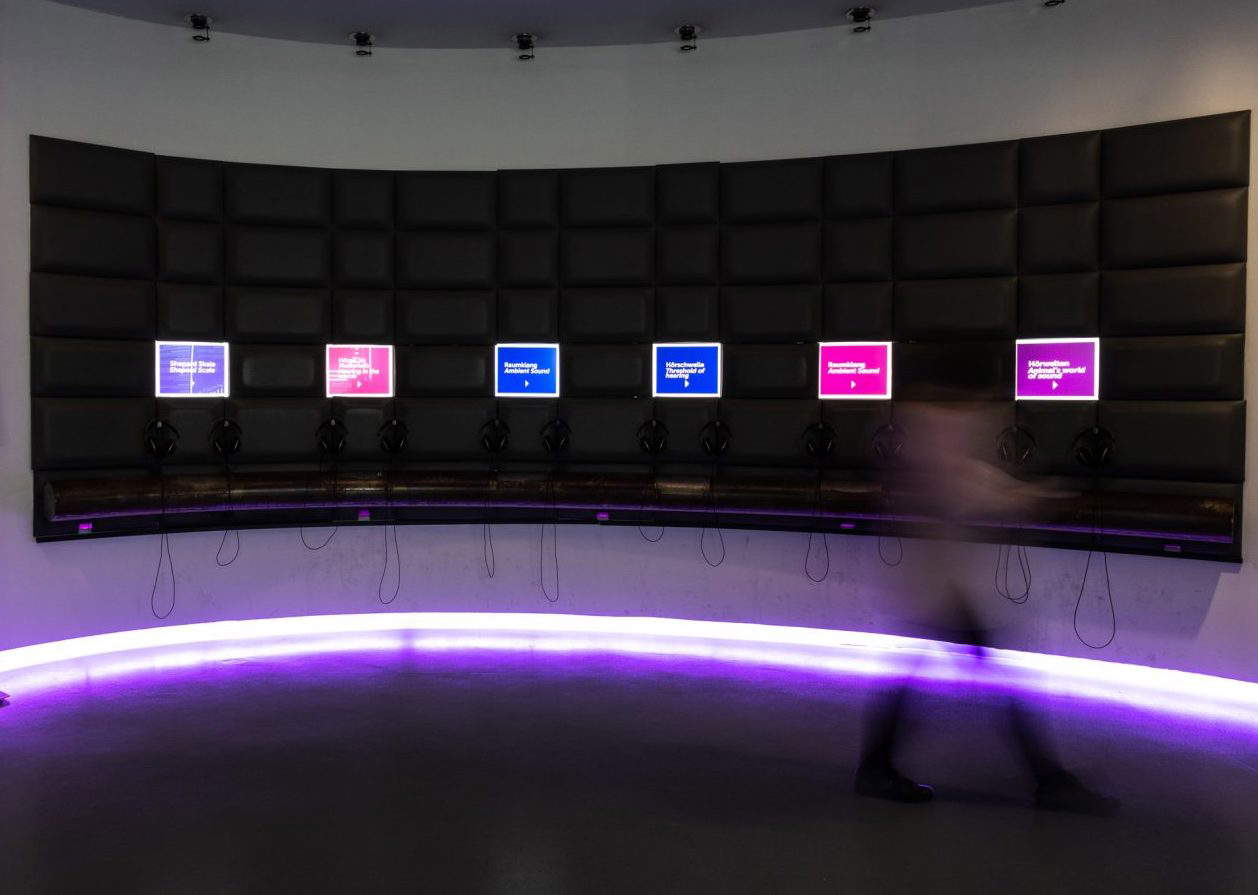
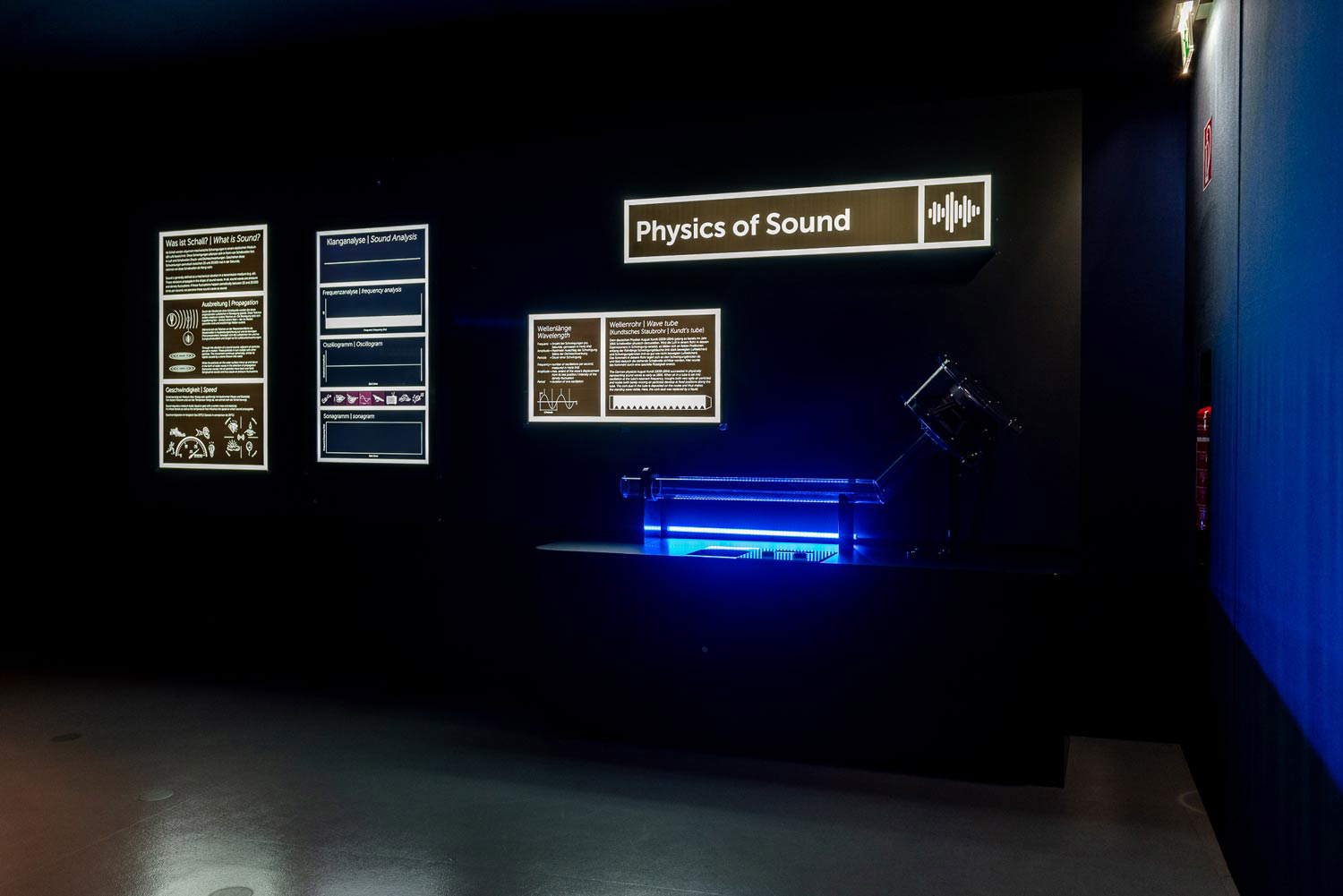
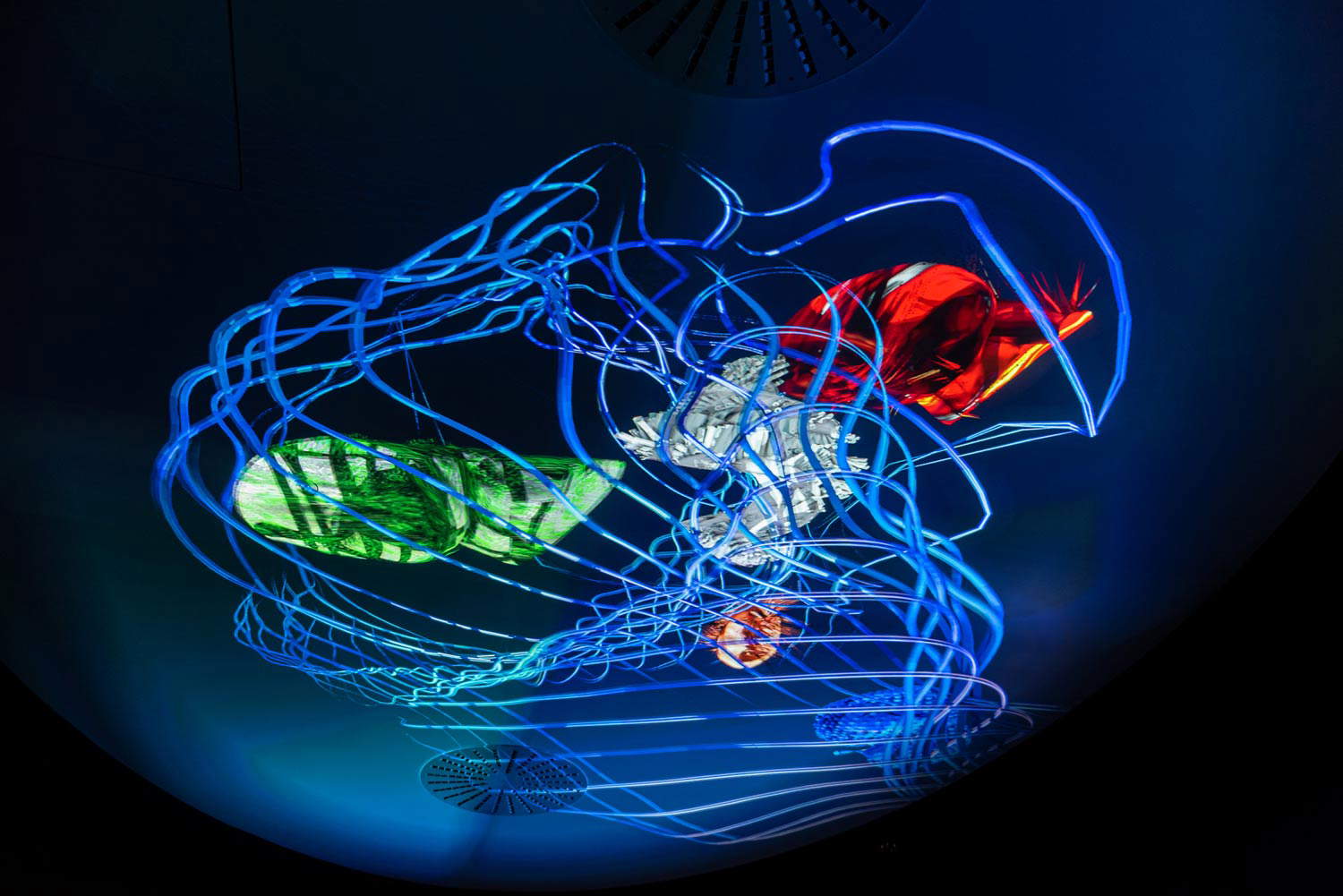



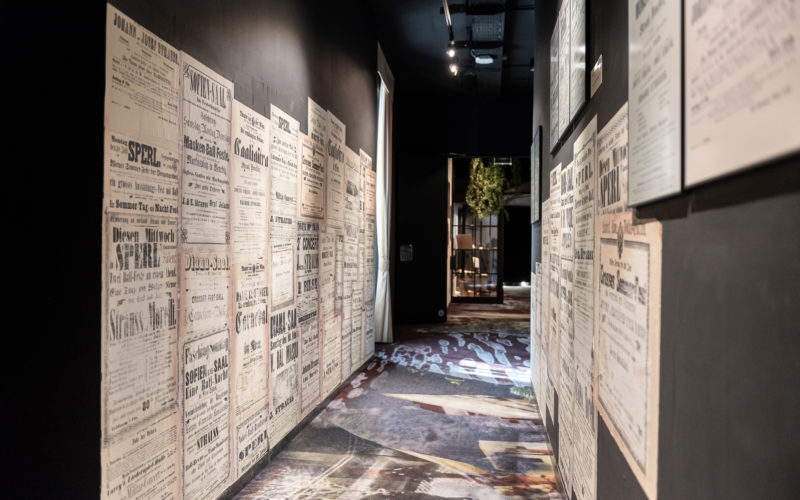

The third floor is devoted to the great composers-Haydn, Wolfgang Amadeus Mozart, Ludwig van Beethoven, Franz Schubert, Johann Strauss son, Gustav Mahler, and the leading figures of the Second Viennese School. Scores, historical images, personal documents, and contemporary artworks uncover the world of the great masters of classical music. However, even on this floor, there is no shortage of playfulness. With the Namadeus interactive terminal, it is possible to turn your name into a historical composition by Wolfgang Amadeus Mozart. The musical play KV 516f was devised by Mozart around 1787 for his piano student Franziska von Jacquin: each letter is assigned a specific combination of notes. The personal score in Mozart’s original handwriting can eventually be taken home as a musical souvenir. The entire third floor is also traversed by the sound carpet, which passes by the great masters of classical music: it was designed by multimedia artist Johannes Deutsch.
Finally reaching the fourth floor, it is possible to? conduct an orchestra. Thanks to the Virtual Conductor, all you have to do is pick up your baton, stand in front of the video projection, choose one of the most famous pieces of classical music, and try to conduct the world’s most famous orchestra. The musicians will stick exactly to the “conductor’s” instructions; giving some tips on perfect rhythm will be the Honorary President of the House of Music, Zubin Mehta. Those who do not keep the rhythm will get a surprise. At the museum store it will be possible to pick up a certificate of passing the Vienna Philharmonic conductor’s test.
The journey through the House of Music concludes with a low-noise room: a silence room for an acoustic reset and to reflect on the importance of sound in the everyday world.
For more info on the House of Music you can visit austria.info
 |
| The Vienna House of Music: an immersive and playful journey into the world of sound |
Warning: the translation into English of the original Italian article was created using automatic tools. We undertake to review all articles, but we do not guarantee the total absence of inaccuracies in the translation due to the program. You can find the original by clicking on the ITA button. If you find any mistake,please contact us.